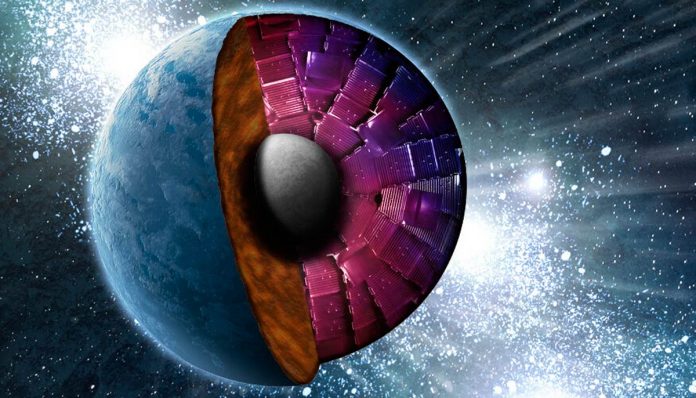Lawrence Livermore National Laboratory scientists have used lasers to determine the high-pressure melting curve and structural properties of pure iron up to 1,000 GPa. This is three times the pressure of Earth’s inner core. It is also four times greater pressure than any previous experiments.
Scientists performed a series of experiments to emulate the conditions observed by a parcel of iron which is descending toward the centre of a super-Earth core. This experiment was a part of NIF Discovery Science program.
A magnetosphere is an important component of habitable terrestrial planets, for example Earth. Earth’s magnetodynamo is created from the convicting liquid iron outer core. This surrounds the solid iron inner core. It is powered by the latent heat released during solidification of the iron.
The prominence of iron in terrestrial planets and precise physical properties at extreme pressure and temperatures are needed to predict what is happening within their interiors. The melting point is a first-order property of iron. This is debated for the conditions of Earth’s interior. The largest rheological transition a material can undergo is the melt curve. Here solid turns to a liquid. The temperature here depends on the pressure of the iron.
Scientists, through their experiments, determined the length of dynamo action during core solidification. The hexagonal close-packed structure within super-Earth exoplanets. The melt curve is a sensitive constraint. Scientists also obtained evidence that the kinetics of solidification at such extreme conditions are fast. This takes only nanoseconds to transition from a liquid to a solid. This also allowed scientists to observe the equilibrium phase boundary.

